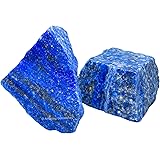
Healing stone is a process of treating stones in the urinary tract. It includes medications and procedures that can remove a stone or break it up into smaller pieces. It also involves managing symptoms, such as pain, and controlling infection.
A stone in the urinary tract may cause a urinary tract infection, which is a type of infection that occurs in the bladder or urethra (the tube that drains urine from your body). It can lead to serious problems such as kidney failure and death.
UTIs can be caused by a number of factors, including a person’s age, diet, and level of activity. A person’s body temperature and urinary pH also can play a role in the development of a UTI.
The bacteria that causes a UTI usually start to colonize the surface of the perineum and periurethral area before infection develops. In most cases, these bacteria are inhibited by the natural microbiota in the urinary tract and eliminate infection before it becomes a serious problem.
There are several ways to treat a UTI: medicine, antibiotics, and surgery. Medical treatment is often the first option, but sometimes a surgical procedure will be necessary to get rid of a stone or to control infection.
Doctors use a special lighted tube to look inside your urethra and bladder called cystoscopy or ureteroscopy. They can then find and remove stones using a laser, a shaver or a specialized tool that is inserted through the urethra or bladder to see the lining of the bladder and ureters.
Some stones can be removed by lithotripsy, a medical procedure that uses shock waves to break up a stone. Shock waves are a noninvasive way of breaking up kidney and ureteral stones that are less than 1/2 inch in diameter. Shock wave lithotripsy is usually performed on an outpatient basis with sedation or local anesthesia.
Lithotripsy can be used to treat a wide range of stones, including calcium, struvite, uric acid, oxalate, and cystine. It can help prevent future stones from forming and may improve the quality of life for patients.
Surgical options include open surgery, endoscopic or laparoscopic surgery, or robotic-assisted surgery. The urologist or nephrologist may also use a synthetic, tubular device called a stent to facilitate passage of stones.
Shock wave lithotripsy is an effective surgical technique for the removal of renal pelvis and upper ureteral stones that are less than 1
Another treatment for a ureteral stone is called percutaneous nephrolithotomy, which involves removing the stone with a device inserted through a small incision in the back into the kidney. This method can be used in some patients who have a large stone that cannot be broken up with lithotripsy or endoscopic procedures.
Bladder stones (also called calculi) are the most common form of kidney stones. They develop when minerals in the urine crystallize and clump together. They can cause severe pain and bleeding in the bladder. They also can cause other problems, such as infection and scarring of the bladder. Some people are more likely to develop bladder stones than others. The risk increases with age and certain diseases, such as diabetes or high blood pressure. Other conditions that can increase the chance of developing a bladder stone include having an enlarged prostate, being overweight, or having a history of kidney disease.









